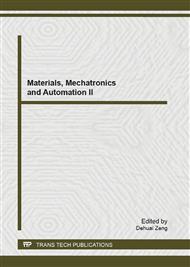[1]
Xie J, Qu X H, Xu S Q. Numerical Simulation and Verification of Airflow in Cold-Store[J]. Transactions of the Chinese Society of Agricultural Engineering, 2005, 21(2): 11~16.
Google Scholar
[2]
Xie J, Qu X H, Shi J Y, et al.Effect of design parameters on flow and temperature fields of a cold store by CFD simulation[J]. Journal of Food Engineering, 2006, 77(2): 355~363.
DOI: 10.1016/j.jfoodeng.2005.06.044
Google Scholar
[3]
Tang Y, Xie J, Wang J F, et al. Application of computational fluid dynamics(CFD)used in simulation of cold storage[J]. Food & Machinery(in chinese), 2011, 5(27): 186~188.
Google Scholar
[4]
Xie J, Tang Y, Wang J F, et al. Computational Fluid Dynamics simulation of influence of different arrangements of fans to the cold store[J]. Science and Technology of Food Industry (in chinese), 2011, 32 (11): 349~351.
Google Scholar
[5]
Tang Y, Xie J, Wang J F, et al. CFD simulation of air flow distribution with different arrangements of fan though a cold store[J]. Food & Machinery(in chinese), 2012, 28(1): 124~128.
Google Scholar
[6]
Zhang J C, Li X H, Yang J G, et al. Comparison and Analysis of Computed Results for Uniformity of Intake Manifold with Different Wall Functions[J]. Transactions of the Chinese Society for Agricultural, 2008, 39(7): 47~50.
Google Scholar
[7]
Zhang S S. The application of computational fluid dynamic[M]. Wuhan: The Huazhong University of Science and Technology (HUST) Press, 2011: 6~9.
Google Scholar
[8]
B/T 50072-2010. Code for design of cold store[S].
Google Scholar
[9]
Yu C B, Lu S X, Zhou Z Y. Practical Handbook of refrigeration and air-conditioning engineering[M]. Beijing: Machinery Industry Press, 2011.
Google Scholar
[10]
Nahor H B Hoang M L, Verboven P, et al.CFD model of the airflow, heat and mass transfer in cool stores[J]. International Journal of Refrigeration, 2005, 28(3): 368~380.
DOI: 10.1016/j.ijrefrig.2004.08.014
Google Scholar
[11]
Xie Jing, Wu Tian. Numerical Simulation on Temperature Field in the Doorway of a Minitype Cold Store [J]. Journal of Shanchai Fisheries University, 2006, 15(3): 333~339.
Google Scholar
[12]
Guo Q T, Wu J F. Practical Handbook of refrigeration and air conditioning design[M]. Beijing: Architectural Press, 1994.
Google Scholar


